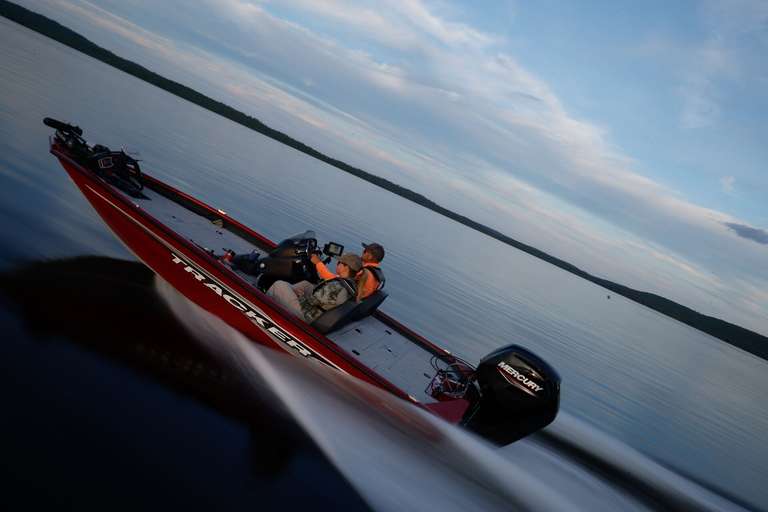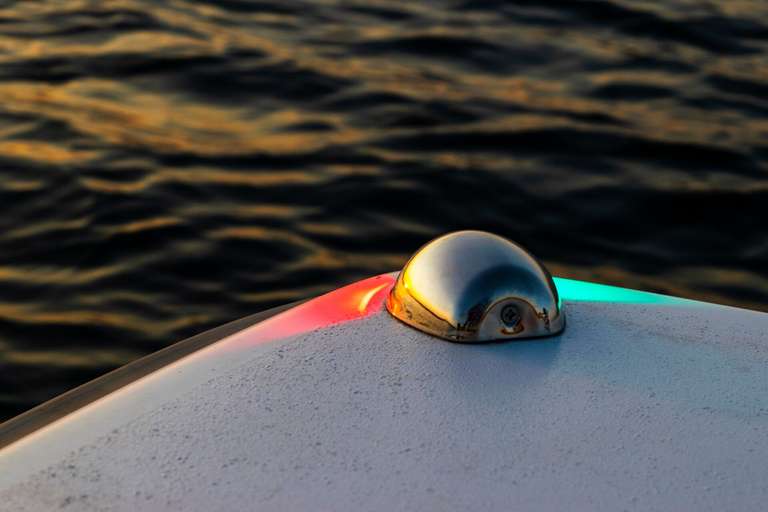Types of Distress Signals for Boats (and How to Use Them)
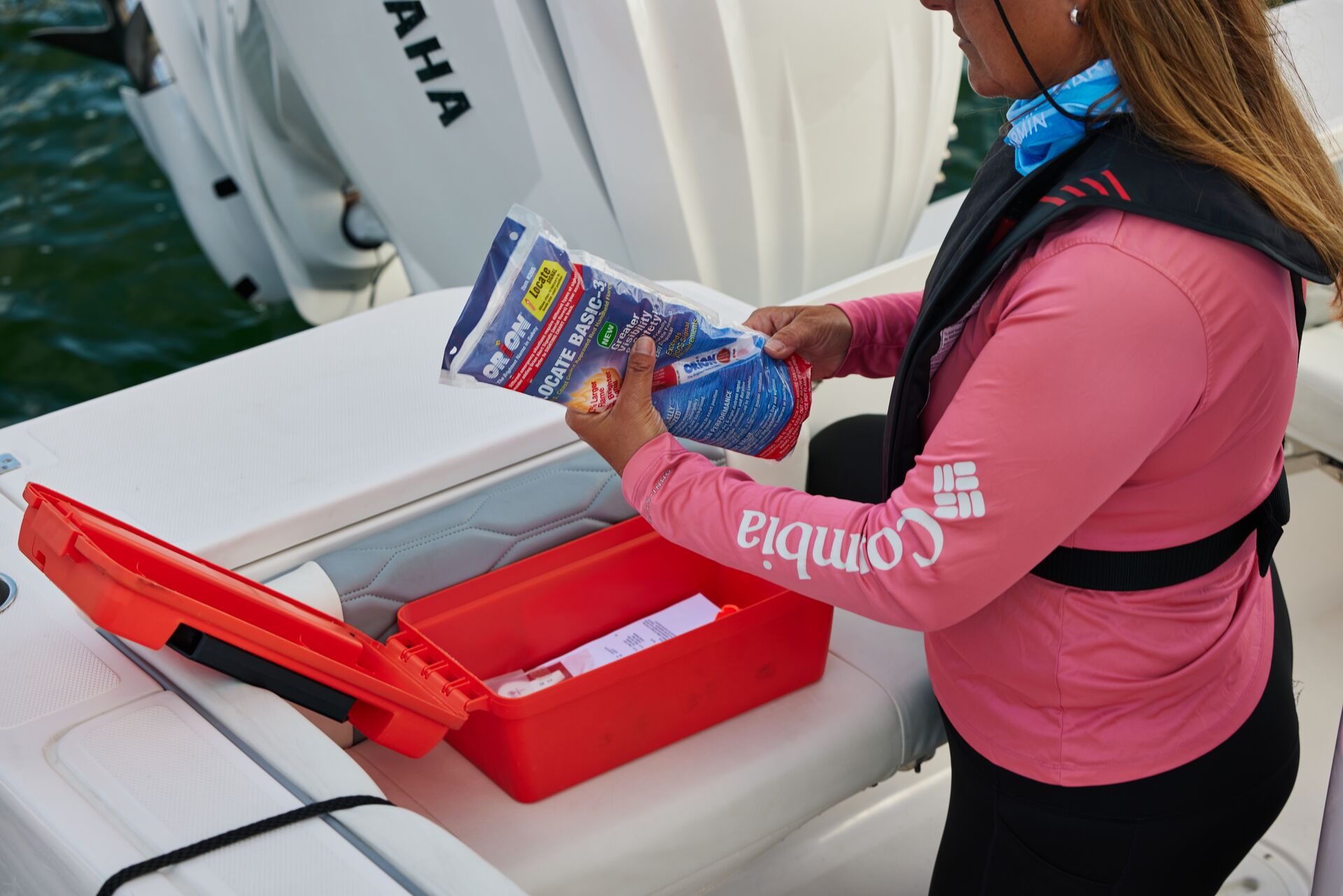
You never know when something could go wrong on a boat or where you might be on the lake when something goes wrong. While we hope you never have to deal with an emergency during a day of fun on the waterways, it's best to be prepared just in case.
That's why you should make sure you have distress signals on board as part of your safety equipment checklist.
Distress signals help you other boaters or local authorities know you need help. Let's talk about the type of signals you should carry — visual distress signals and sound-producing devices — and how to use them.
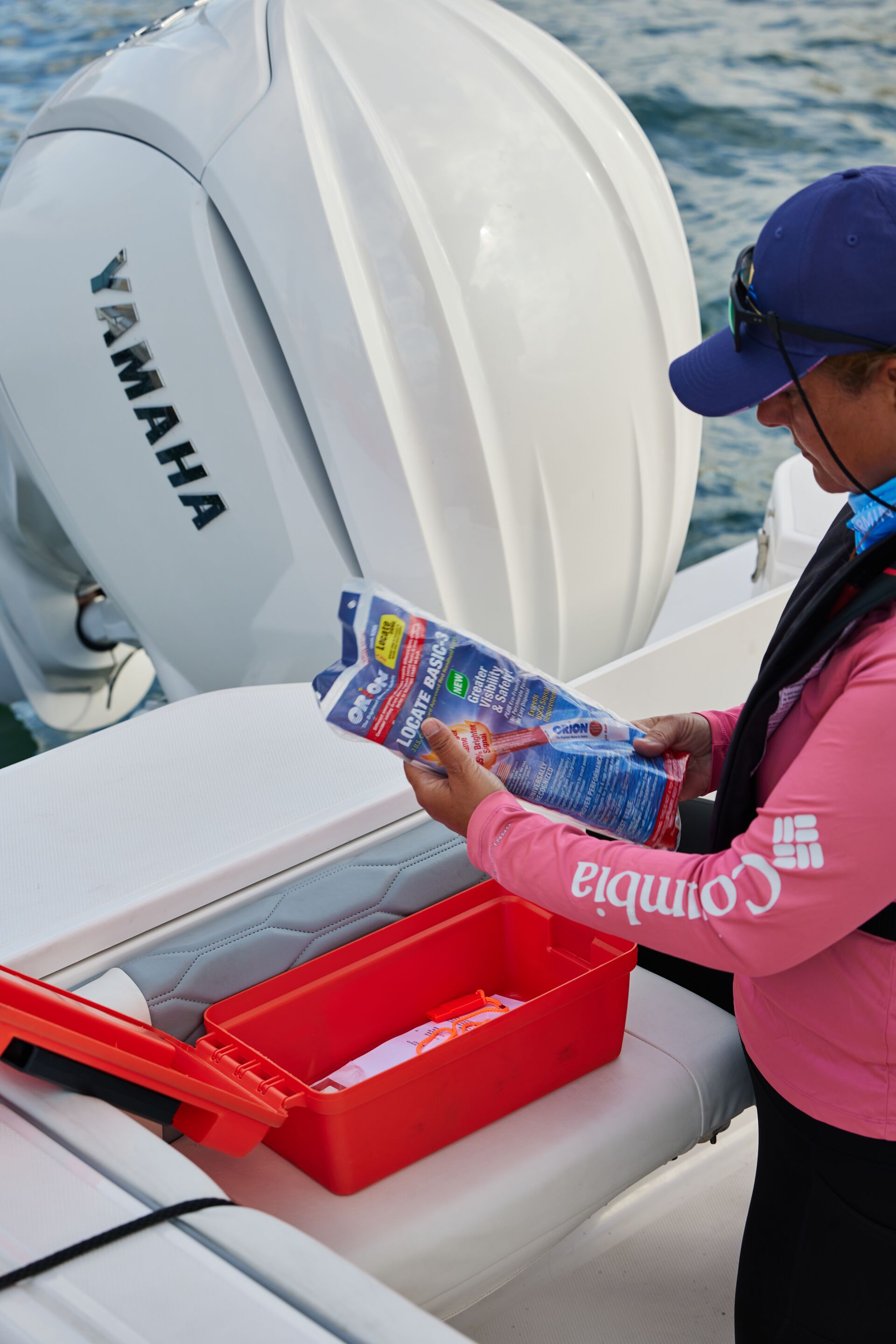
Visual Distress Signals (VDSs)
A visual distress signal (VDS) is any device that can alert and help others locate your boat in the event of an emergency. However, a VDS can't be used unless there is an emergency and help is needed. Breaking the law through misuse can come with serious penalties.
All recreational boats operating in the coastal waters of the U.S., the Great Lakes, or bodies of water connected to the U.S. coastal waters and Great Lakes, up to the point where the water is less than two miles wide, are required to have a VDS on board. Additionally, boats owned in the U.S. must carry VDSs when operating in international waters.
However, during daytime hours, the following vessels are not required to carry distress signals.
- Boats less than 16 feet in length
- Boats participating in regattas and other organized events
- Open sailboats under 26 feet in length not equipped with an engine
- Manually propelled boats like canoes and kayaks
These boats are only required to carry nighttime VDSs when operating at night in the waters listed above.
What Are the Types of VDSs?
Boat operators can stock their boats with different VDSs, including:
- Day Signal: Visible in sunlight
- Night Signal: Visible in the dark
- Anytime Signal: Visible in daylight and at night
- Pyrotechnic Device: Uses smoke and flame
- Non-Pyrotechnic Device: Not combustible
Before leaving the dock, make sure you know how to use the device you choose to put on your boat.
Pyrotechnic VDSs
All pyrotechnic distress signals must be USCG-approved, in working condition, unexpired, and ready to use in an emergency.
There are four types of pyrotechnic VDSs.
- Type A: Parachute flares
- Type B: Multi-star flare
- Type C: Handheld flare
- Type D: Orange Smoke flare
USCG-approved pyrotechnic VDSs include the following:
- Aerial or handheld flares
- Aerial or handheld orange smoke flares
- Red meteor or parachute flares
- Associated launchers of these signals
Non-Pyrotechnic Visual Distress Signals
Non-pyrotechnic VDSs must have a manufacturer's certification that shows they meet USCG requirements. These must be kept in working condition and in an easily accessible location.
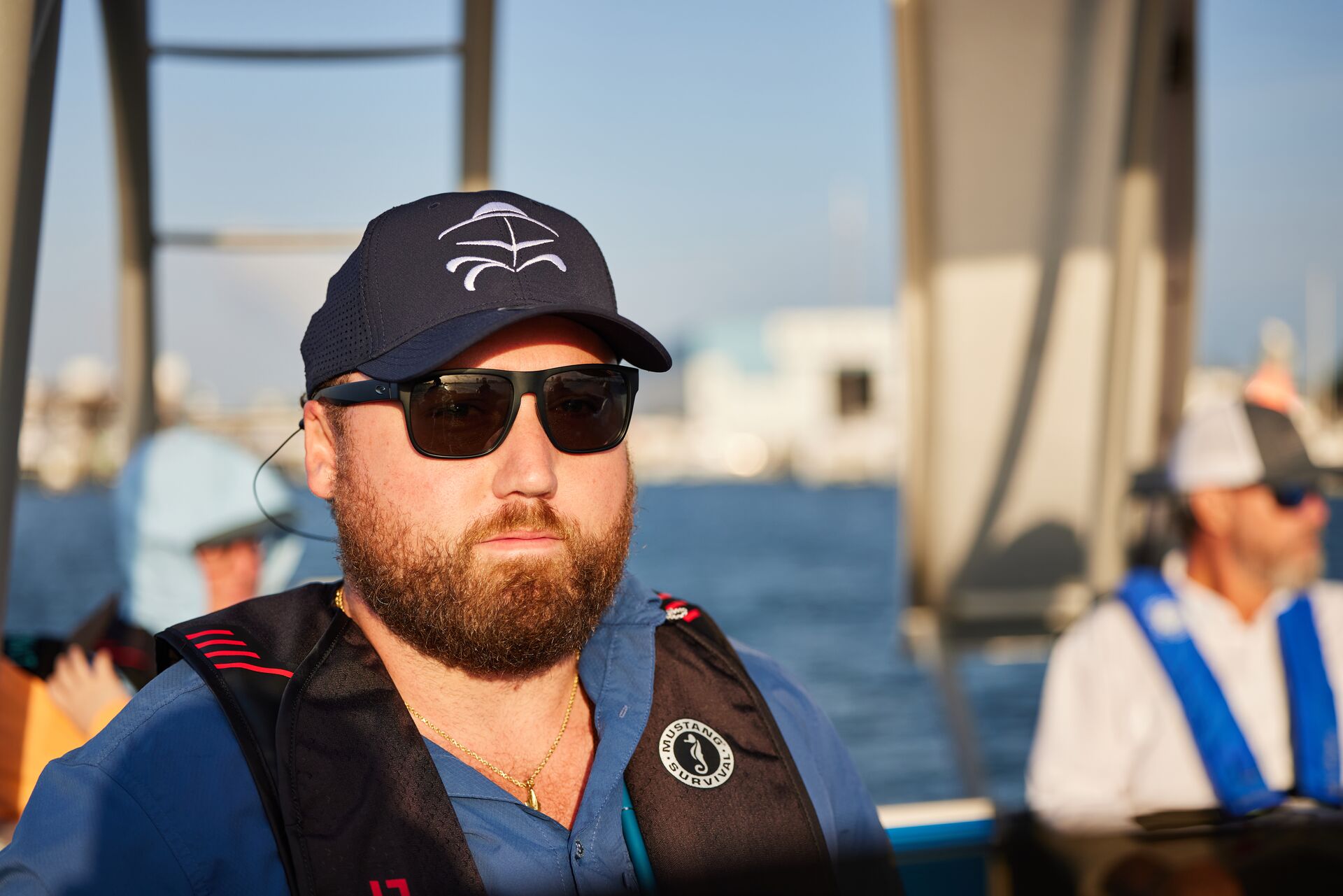
How to Handle and Store Visual Distress Signals
Store visual distress signals in a watertight container (such as a surplus ammunition box) to ensure they stay in good working condition.
Boxes should be painted red or orange and marked as "distress signals." Keep these boxes in a safe place and out of the reach of children.
What's the Right Combination of Visual Distress Signals?
A boating accident can happen at any time of day. Vessels should carry at least three devices that can be used either during the day or at night.
Some acceptable combinations include the following.
- Three handheld flares
- One electric distress light and three handheld orange smoke distress signals
- One handheld red flare and two parachute flares
- One handheld orange smoke signal, two floating orange smoke signals, and one electric distress light
Having a variety of VDSs means you have more than one way to alert others nearby that you need help in case one VDS doesn't work.
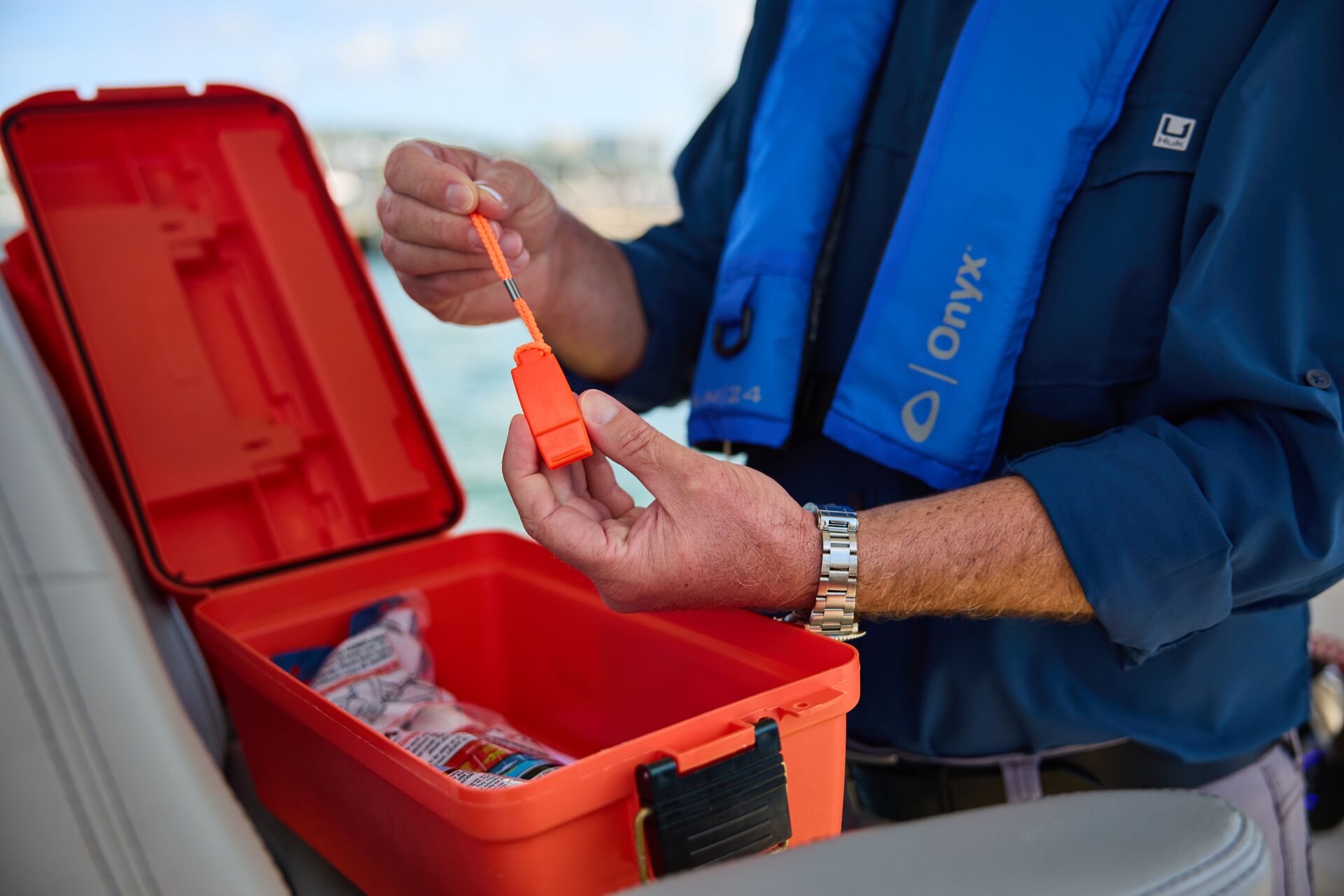
Other Signaling and Sound-Producing Devices
"Visual" signals aren't the only way to call for help on the water. Boaters can also use sound-producing devices to signal an emergency.
Most sound signals can be used at any time (day or night) since they don't need to be seen to be effective.
Sound-producing devices include:
- Marine Radios: Use Channel 16, 156.8 MHz, for a VHF radio. Send a DSC alert on channel 70 (only for DSC-type radios and where the service is offered). Use 21–82 KHz (MF).
- Other Sound-Producing Devices: These can include continuous sound (foghorn, bell, or whistle) or a gun or other explosive signal fired at one-minute intervals
- An EPIRB radio: Use the alarm signal on an Emergency Position Indicating Radio Beacon.
Other Signaling Devices Include:
- A flashlight: Flash the S.O.S. signal (short-short-short long-long-long short-short-short).
- A Distress Cloth: Fly it from the mast or laid on the roof.
- Dye Marker: Releases orange dye into the water that marks the water around the boat.
- Code Flags: Display a square over or under a circle or the letter N over the letter C.
- Arm Signal: Repeatedly raise and lower outstretched arms.
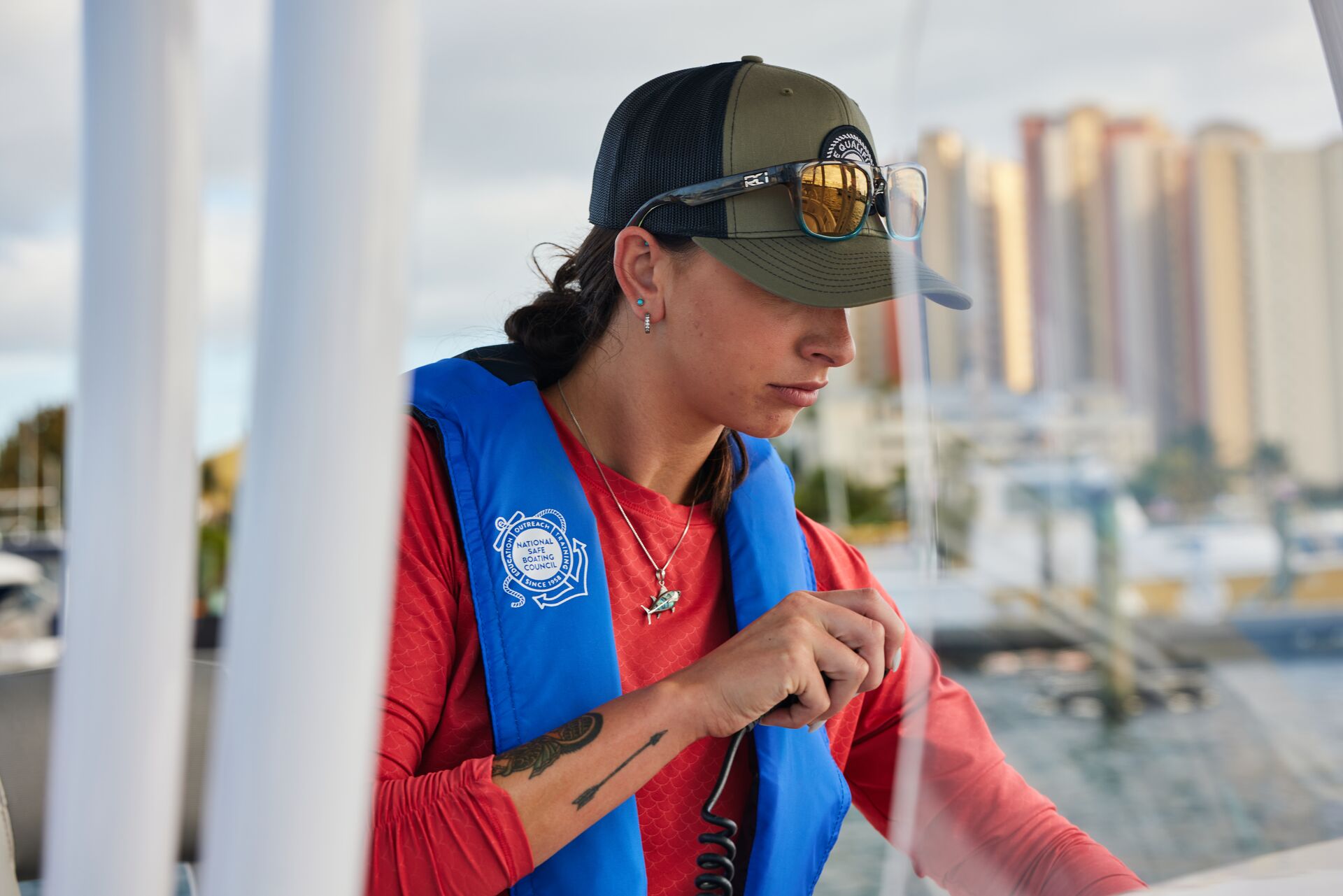
Using a VHF Radio
A VHF radio is not required to be carried by recreational boaters but is recommended for communication with other boaters, the USCG, commercial vessels, marinas, and lock operators.
Recreational boats under 20 meters in length are not required to have a station license to operate unless they are traveling to foreign ports or transmitting to foreign stations. The USCG enforces VHF radio use.
Boats under 20 meters in length or vessels under 65 feet not traveling into foreign ports or transmitting on a foreign station are not required to have a station license to use a VHF radio.
The chart below shows all available channels for recreational boaters.
| Channel Number | Channel Purpose/Use |
|---|---|
| 6 | Inter-ship safety communications only |
| 9 | Commercial and non-commercial inter-ship, ship-to-coast, and alternate calling channel |
| 13 | Ocean-going vessels, bridge tenders, tugs while towing, locks |
| 16 | Distress safety and calling, calling USCG, establishing general contact |
| 24-28, 84-88 | Public telephone calls (to call the marine operator) |
| 68, 69, 71, 78 | Non-commercial inter-ship and ship-to-coast (recreational boat working channels) |
| 72 | Non-commercial inter-ship only |
Additionally, marine weather stations (WX-1, WX-2, and WX-3) broadcast the National Weather Service continuously. Forecasts are updated every six hours unless conditions require them to be more frequent.
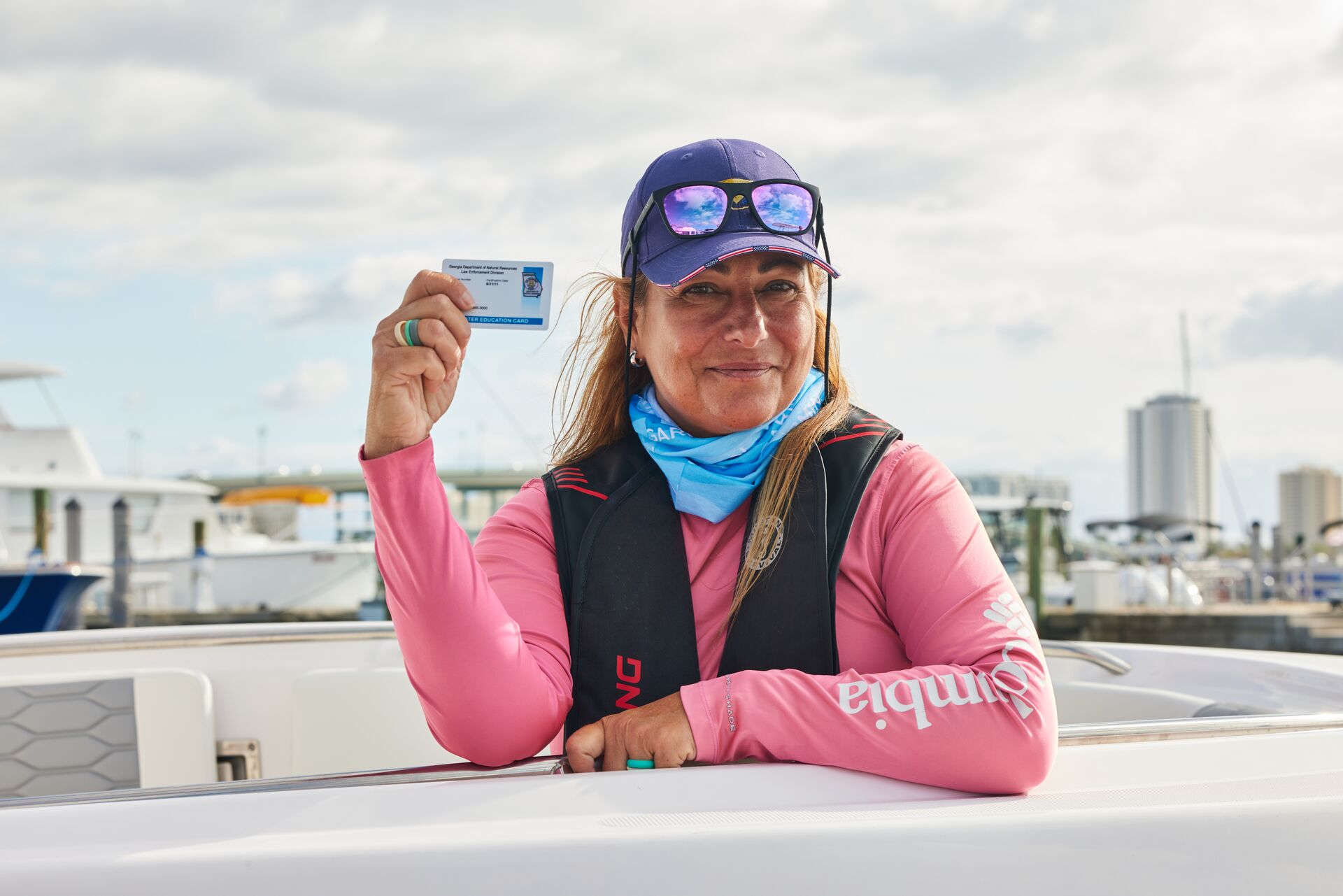
Learn How to Be Prepared for Emergencies When Boating
While we hope you enjoy many fun and emergency-free days on the water every year, there's always a risk that something can go wrong when boating.
In addition to carrying the right distress signals on board, you must know what to do in an emergency. Better yet, learning how to avoid boating accidents and bad situations on the water can help you have more fun on the water!
ilearntoboat wants you to stay safe on the water and know what to do if something goes wrong. When you take our online boater education course, you learn everything you need to know to do just that. Plus, you'll meet your state's requirements for boater education — and enjoy the learning process with our gamified course.
Make sure you're prepared for plenty of safe fun on the water! Take the course for your state, then head out on your next adventure.
First published in 2021. Content most recently reviewed and updated for accuracy and relevancy December 4, 2024.

